|
Welcome―Come Right In
by Bob Brooke
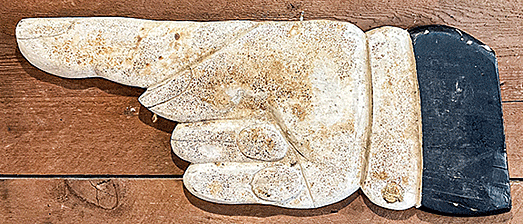 Nothing
says welcome to customers than a large colorful sign. Businesses have
known this since the days of ancient Rome and Greece.. Back then,
businesses of all types used signs with individual symbols that
displayed their product or service. Images helped display information
rather than texts, as most people couldn’t read back then. Nothing
says welcome to customers than a large colorful sign. Businesses have
known this since the days of ancient Rome and Greece.. Back then,
businesses of all types used signs with individual symbols that
displayed their product or service. Images helped display information
rather than texts, as most people couldn’t read back then.
Early Signs
In ancient Rome, shopkeepers employed signboards
for their shops. They had simpler ones made from stone, wood, or
terracotta and for more luxurious businesses, of bronze, copper, or
marble. Some shop owners had whitened areas, known as albums, painted on
the outer walls of their shops. Signboards contained images or symbols
to indicate the product or service available inside. Some of these
symbols included the three balls of pawnbrokers and the red and white
barber's pole that have survived to the present day.
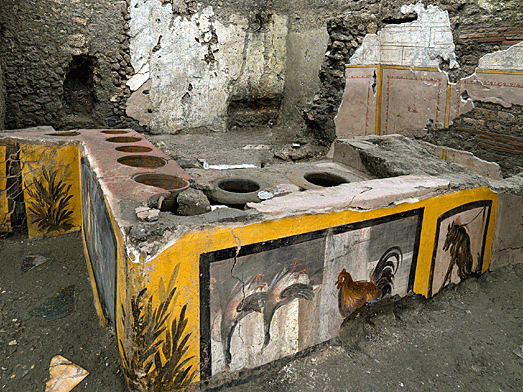
In 1389, King Richard II of England
ordered tavern owners to erect signs outside their premises. The
legislation stated "Whosoever shall brew ale in the town with intention
of selling it must hang out a sign, otherwise he shall forfeit his ale.”
The practice of using signs spread to other types of commercial
establishments throughout the Middle Ages.
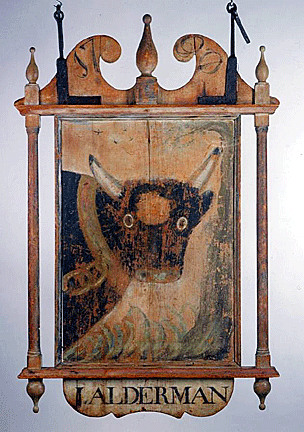 Later,
business signage evolved. Where signs had once only indicated locations,
businesses began using them to advertise, as well. A simple trade sign
was insufficient to distinguish one business from another, so business
owners began to employ a variety of devices to differentiate themselves.
Sometimes they adopted figures of animals or other objects, or portraits
of a well-known persons, which they considered likely to attract
attention. Later,
business signage evolved. Where signs had once only indicated locations,
businesses began using them to advertise, as well. A simple trade sign
was insufficient to distinguish one business from another, so business
owners began to employ a variety of devices to differentiate themselves.
Sometimes they adopted figures of animals or other objects, or portraits
of a well-known persons, which they considered likely to attract
attention.
The object of signboards was to attract the public, they were often of
an elaborate character. Not only were the signs themselves large and
sometimes of great artistic merit—especially in the 16th and 17th
centuries, when they reached their peak—but the posts or metal supports,
from which the signs hung, protruding from the shops over the narrow
streets, were often elaborately worked examples of wrought-iron.
Since the 17th century, English Common law stated that businesses had to
have a sign representing the services they provided. For instance, a
shoemaker had a sign with the symbol of a shoe. Materials such as iron
and wood made up most signs. Signs featured mostly images since most
people still couldn’t read.
Signs Change with the Times
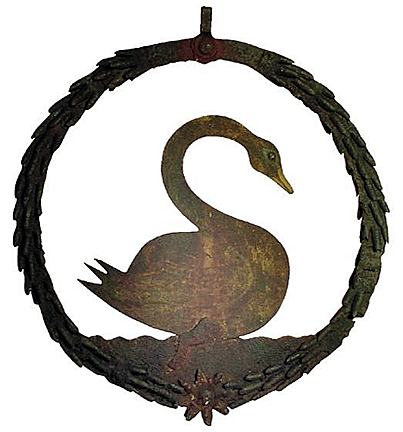 As
times changed, so did signage. By 1700, almost every business was using
at least one sign for advertising and display purposes. Signs also
became more artistic, boasting a variety of colors; some even featured
gold foiling, which was the highest quality signage a business owner
could have made at the time. As
times changed, so did signage. By 1700, almost every business was using
at least one sign for advertising and display purposes. Signs also
became more artistic, boasting a variety of colors; some even featured
gold foiling, which was the highest quality signage a business owner
could have made at the time.
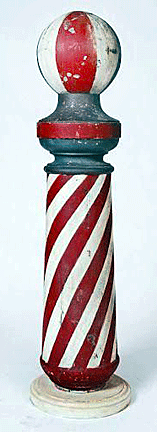 During
the 18th century in Europe and America, more and more merchants chose
simple wooden signs in square, rectangular, or round shapes hand-painted
with the minimal amount of words to convey what services they offered. During
the 18th century in Europe and America, more and more merchants chose
simple wooden signs in square, rectangular, or round shapes hand-painted
with the minimal amount of words to convey what services they offered.
Signs became larger, too, and because of the narrow streets in
18th-century towns and cities, often spanned the width of the street,
sometimes low enough forcing passersby to have to duck underneath them.
And the bigger they became, the heavier. Often the supports just
couldn’t hold them up, and they tumbled down, becoming a danger to
townspeople. This compelled the city governments of Paris in 1761, and
in London, between 1762 and 1773, to introduce laws requiring signboards
to be removed from overhanging the street or fixed flat against the
wall.
By the early 19th century,
businesses began to use hand-painted and then stenciled tin signs, while
the art of hand-lettering and hand-painting walls, windows, and
billboards was just beginning to blossom. As the Second Industrial Age
flourished in post-Civil War America, branding, logos, and other markers
to distinguish products became incredibly important to competing
manufacturers. Artisans who hand-painted signs excelled in gorgeous,
eye-popping lettering and helped companies like Coca-Cola develop their
logos.
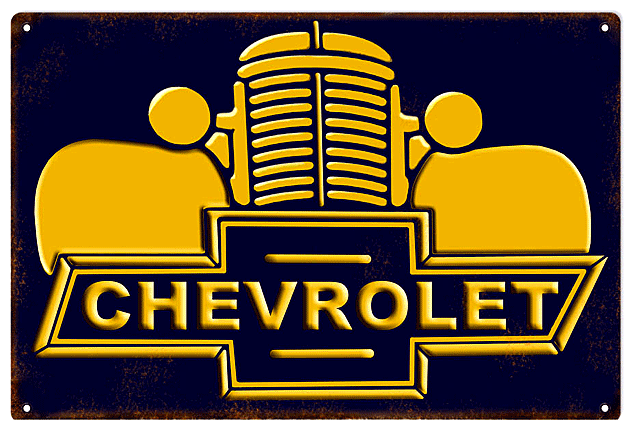
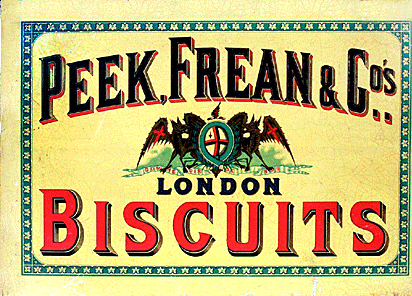 In
the late 19th century, American manufacturers developed new machines and
techniques that allowed them to stamp, trim, and apply lithographs to
tin sheets. This let manufacturers that made products like cosmetics,
tobacco, or processed food develop lush, colorful logos and characters
that could be lithographed onto tin containers and tin signs to entice
new customers. Tin signs, unlike a hand-painted paper sign, could be
hung outside because they could withstand any weather, even though
eventually they might rust. In
the late 19th century, American manufacturers developed new machines and
techniques that allowed them to stamp, trim, and apply lithographs to
tin sheets. This let manufacturers that made products like cosmetics,
tobacco, or processed food develop lush, colorful logos and characters
that could be lithographed onto tin containers and tin signs to entice
new customers. Tin signs, unlike a hand-painted paper sign, could be
hung outside because they could withstand any weather, even though
eventually they might rust.
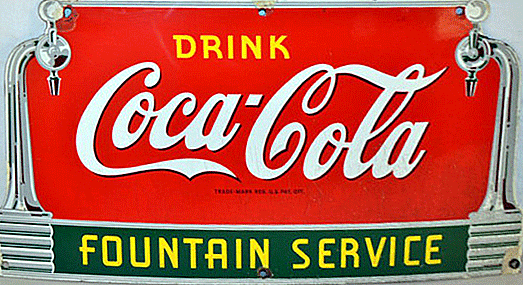
Tuscarora Advertising Company and Standard Advertising Company, both in
Coshocton, Ohio, began producing stunning tin signs in 1895 using the
latest technology in offset lithography.
Porcelain Enamel Signs Look to the Future
In the 1920s, the stylized look of porcelain signs
aligned with the Art Deco aesthetic, and so tin signs fell out of favor.
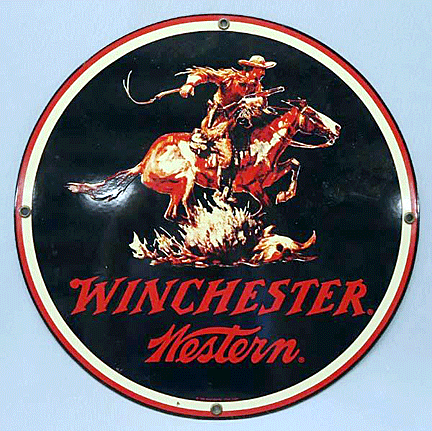 Porcelain
signs, also known as enamel signs or porcelain enamel signs, originated
in Germany in the 1880s. Merchants first imported them to the United
States in the 1890s. Actually, the signs don't contain any clay as in
porcelain dinnerware or pottery. The vitreous enamel coating the signs
does, however, contain the powdered glass, called frit, that's a main
ingredient of soft-paste porcelain. Porcelain
signs, also known as enamel signs or porcelain enamel signs, originated
in Germany in the 1880s. Merchants first imported them to the United
States in the 1890s. Actually, the signs don't contain any clay as in
porcelain dinnerware or pottery. The vitreous enamel coating the signs
does, however, contain the powdered glass, called frit, that's a main
ingredient of soft-paste porcelain.
In the early days, the colored enamel would be applied to the white
powdered-glass base of a sign via stencils. These signs could be die-cut
into almost any shape. Some of them had only one side so they needed to
be hung on a wall, while others had two sides and could be attached to a
wall with a flange. In the early 1900s, Enameled Iron Company,
Ingram-Richardson, and Baltimore Enamel & Novelty brought in craftsmen
from Europe to help them produce these beautiful and colorful signs.
Collecting Old Commercial Signs
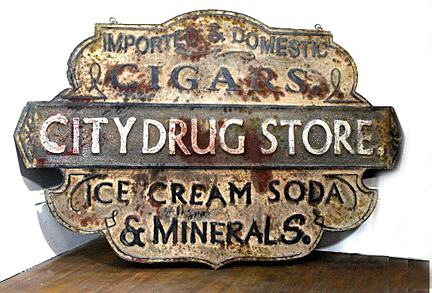 Antique
and vintage signs are highly sought after by collectors for their
beauty, enduring historic value, and because they make great
conversation pieces. Advertising everything from soda and oil products
to farm equipment and household appliances, old signs might be
classified as wood, porcelain, tin, or cardboard. Antique
and vintage signs are highly sought after by collectors for their
beauty, enduring historic value, and because they make great
conversation pieces. Advertising everything from soda and oil products
to farm equipment and household appliances, old signs might be
classified as wood, porcelain, tin, or cardboard.
Collectors of old commercial signs tend to fall into one of two
groups—those interested in oil, gas, and other automobile-related
vintage porcelain signs, and those who collect so-called "country store"
signs, generally found at rural five-and-dimes or diners, which range
from brands of soda, milk, and bread to tobacco, stoves, and floor
varnish.
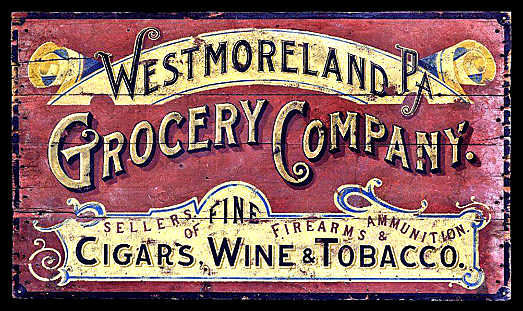
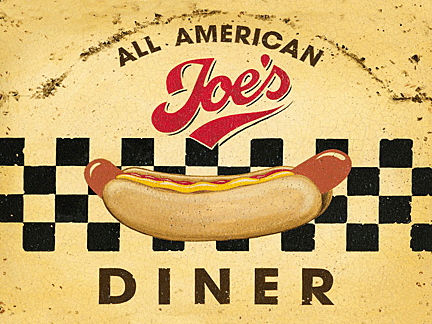 However,
during the World War II, scrap drives saw many old signs of both enamel
and tin melted down, making authentic vintage signs rare today.
Eventually, high labor costs caused porcelain signs to fall out of favor
in the 1950s. Many of the antique and vintage porcelain signs that
survived the scrap drives have bullet holes in them since old signs made
great targets for shooting practice. Others show signs of crazing or
acid etching in the enamel. However,
during the World War II, scrap drives saw many old signs of both enamel
and tin melted down, making authentic vintage signs rare today.
Eventually, high labor costs caused porcelain signs to fall out of favor
in the 1950s. Many of the antique and vintage porcelain signs that
survived the scrap drives have bullet holes in them since old signs made
great targets for shooting practice. Others show signs of crazing or
acid etching in the enamel.
Cable T.V. shows like American Pickers have increased the popularity and
nostalgia of old signs. As seen on the show, many signs end up in old
barns and sheds amid piles of other junk. Only a collector of old signs
sees the potential and value in them. With antique signs, condition,
visual appeal, and scarcity all affect value. Many reproductions have
been made and restorations of old signs are prevalent.
<
Back to More Antique Spotlights
Next
Article > |
